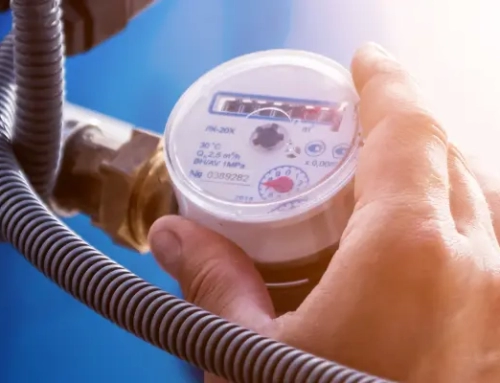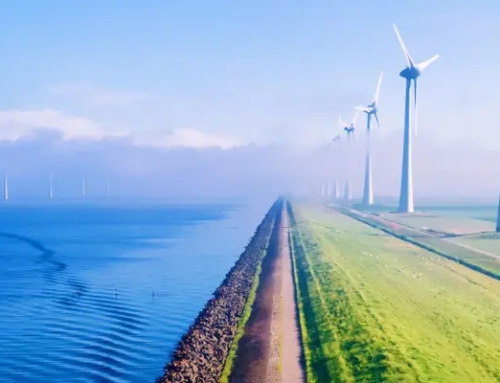Voltage optimisation: how does it work & is it worth it?

Concerned about creeping energy bill prices? You’re not alone. With the economy in turmoil and energy prices continuing to fluctuate, businesses across the UK are looking to reduce how much they’re spending on energy.
From turning the lights off after-hours to installing smart meters, there are plenty of ways to cut costs and save energy in the workplace – but have you considered voltage optimisation technology?
This guide looks at what voltage optimisation is, how it works and whether a voltage optimiser is right for your organisation. Let’s go!
What is voltage optimisation?
Voltage optimisation is simpler than it sounds: it just means balancing your power supply. A voltage optimiser converts the energy supply coming into your premises so it’s the right voltage for your electrical equipment.
Why is voltage optimisation necessary?
To better understand the magic of voltage optimisation, let’s dive into why it’s needed in the first place.
Power is supplied from the National Grid at around 242 volts in the UK, but most electrical equipment only needs 220v to run efficiently. We don’t tend to notice this issue at home – electronic gadgets like our phones and toothbrushes already have transformers built into the power cables to convert the power supply.
But if you’re running a business, the difference between the power you’re supplied and the power you’re using is a much bigger issue – one that’s costing you money and time.

How does voltage optimisation work?
Voltage optimisers are installed where your electricity supply comes in, usually between your transformer and main low voltage distribution board.
While the voltage your premises receives is higher than necessary, it can also vary dramatically during the day due to fluctuations in supply and demand. This can result in power surges or dips, which are sudden increases or decreases in power.
This means that the 242v of power your premises is supplied with could actually range anywhere from 210-250v. Fluctuations in your power supply can cause damage to your equipment, disrupt your operations and even trip sensitive equipment.
Voltage optimisers work like a control valve: when any electricity passes through the voltage optimiser, it’s cleaned, balanced and regulated to the optimum levels for your appliances and equipment.

What happens without a voltage optimiser?
Without a voltage optimiser, you’re not only paying for power you aren’t using, but your appliances have too much electricity running through them.
If you supply an electrical device with more power than it needs, it doesn’t work any better: it simply wastes the extra energy as heat.
Over-voltage can cause all sorts of problems, from reducing your equipment’s lifespan to burning out parts of your appliance and racking up maintenance costs.
By reducing the voltage with a voltage optimiser (typically anywhere between 10-19%), you reduce the wasted energy and make your equipment run more efficiently.
Plus, the energy you save is energy you’re not drawing from the power supply, so you’re not only saving money but you’re reducing your carbon emissions and doing your bit for the planet, too.
Before installing a voltage optimiser

After installing a voltage optimiser

Voltage optimisation: the pros and cons
Now you understand what voltage optimisation is and how it works, let’s weigh up the pros and cons:
Benefits of voltage optimisation
Downsides of voltage optimisation

Is voltage optimisation worth it for your organisation?
With all that in mind, the real question is will a voltage optimiser be a good fit for your business? Here are a few things to consider:
1. Your business plans
Consider your organisation’s short, medium and long-term business plans to determine whether a voltage optimiser is going to be worth it. Look at the savings you could make and work out how long it’ll take to see a return on your investment.
2. Your premises
Do you rent your premises or do you own it? If you rent, or you’re planning to expand, will your business stay at this premises long enough to see a return on investment?
3. Your current energy consumption
Look at the kind of equipment used on your premises. Work out how much of the electrical equipment you use is voltage-dependent, and how much of your overall energy consumption comes from this equipment.
Examples of voltage-dependent equipment include lights, electric kettles, and anything with an operating motor, like a fridge. Voltage-independent equipment includes things like electric heating and computers.
If the vast majority of your usage comes from voltage-dependent equipment, installing a voltage optimiser would likely result in substantial savings for your business.
4. The voltage optimiser supplier
Once you know that enough of your consumption comes from voltage-dependent equipment to make it worth the investment, you then need to consider who to trust with the installation.
There will be plenty of great options out there, however it’s important to choose a trusted company who have experience installing voltage optimisers. At U4L, we’ve helped hundreds of businesses across the UK with everything from voltage optimisation installations to reducing their energy bills, so you’d be in safe hands with us.
As you now know, voltage optimisers are a clever piece of energy efficiency technology that can make a huge difference to your organisation – not only in terms of money saved, but your impact on the planet.
Want to see if your organisation could benefit from a voltage optimiser? Get in touch for a free assessment today. With over 60 years of experience, we’re your experts in all things energy so you can trust we’ll find the best solution for you.





